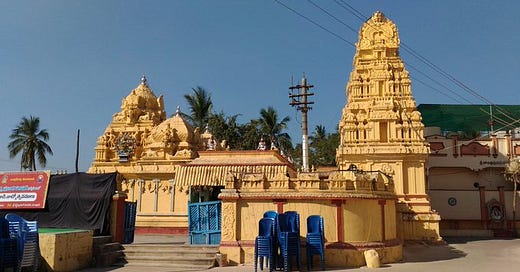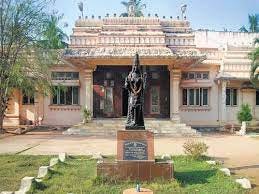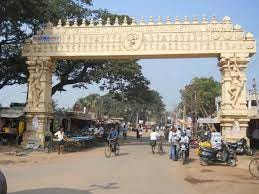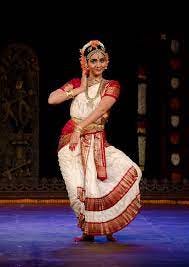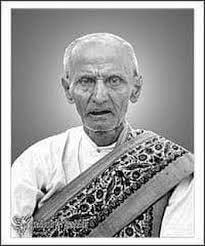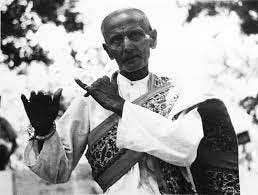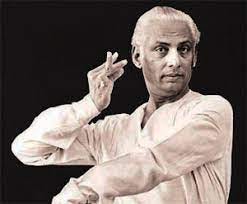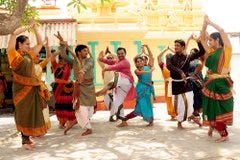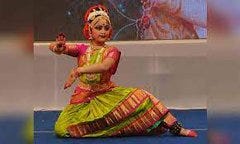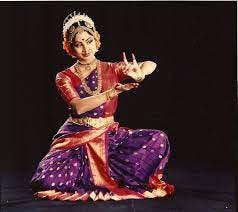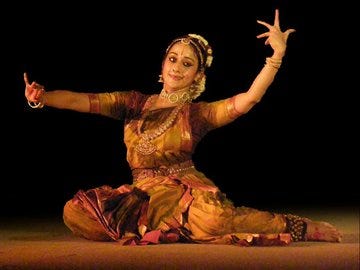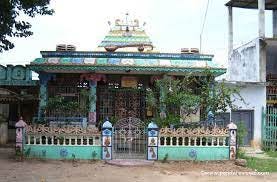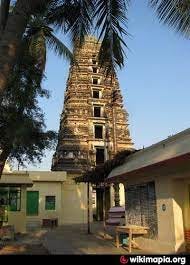Kuchipudi
Kuchipudi village, where the classical dance form of the same name originated. This post is however more about the village and the history of the dance form evolution, than the dance per se.
The village of Kuchipudi is located in Krishna district, it's original name was Kuchelapuri, which itself is derived from Kusilavapuram, a Sanskrit term meaning village of travelling bards and artistes, that give this dance form it's name. Like all other classical dance forms Kuchipudi traces it's roots to the Natya Shashtra, a treatise on the performing arts, in 6000 verses over 36 sections, that describe the theory behind the Shiva Tandava, rasa, bhava, expressions, techniques.
It was first mentioned by Bharata Muni who described it was Kaishiki vritti. However the form came into it's own during the 2nd millenium, influenced by the music and dance traditions of the Bhakti movement. Influenced largely by Vaishnavism, the adherents of this dance form were called as Bhagavatulu in Telugu and Bhagavatar in Tamil. This evolved into Kuchipudi in Andhra, while in Tamil Nadu it became to be known as Bhagavata Mela Nataka.
Both Kuchipudi and Bhagavata Mela Nataka, are very much related to the Yakshagana of Karnataka, at the core, though outwardy they have differences in costumes, structure and interpretation. As per some historians, Kuchipudi emerged somewhere in the late 13th century, when the Gangas of Kalinga, patronized this art form, that was based a lot on the Ashtapadis of Jayadeva's Gita Govinda.
The current version of Kuchipudi we know well emerged during the 17th century,when Narayana Teertha a well known devotee of Krishna, who authored Sri Krishna Leela Tarangini a Sanskrit dance drama, inspired by Jayadeva's Ashtapadis. However it was Theertha's disciple Siddendhra Yogi, who actually shaped Kuchipudi, bringing in a distinctive style, which is followed to date. Born in a Brahmin family in Kuchipudi village, he was actually a dullard by nature.
He ran away to Varanasi, where he became a disciple of a Vaishnavite pandit , under whom he learnt abhinaya and Alankara Shastra, though some versions state he learnt his craft at Udupi, imbibed by the Madhura Bhakti. Siddhendra Yogi wrote the Bhama Kalapam, about Satyabhama's longing to be part of Krishna, and how he makes her get rid of her materialist values. This dance drama to date forms the very basis of Kuchipudi.
Inscriptions state that Kuchipudi enjoyed patronage from the Vijayanagara rulers at the royal court. However post Tallikota and the destruction of Hampi, most of the artistes migrated down South towards Thanjavur, where the Nayak rulers gave them land to settle. One such settlement was Melattur near Thanjavur, where the then ruler . Achyuthappa Nayak granted these artistes to around 500 Kuchipudi artistes, who had fled from Hampi after Tallikota.
These Kuchipudi artistes over the years, began to practice their art, that would give rise to the Bhagavathar Melas in TN, as well as a unique style of Bharatanatyam called Melattur Bharatanatyam. However the conquest of the Deccan by Aurangzeb in 1687, saw the decline of Kuchipudi, with all public performances being banned. With Aurangzeb's death and the decline of the Mughal empire,the Hindu kingdoms once again rose in revolt, carving out their own fiefdoms.
The advent of the British, saw Andhra become part of the Madras Presidency, and Kuchipudi was attacked by the Missionaries and British officers as a "debased tradition of prostitutes, slavery to idols". In 1910 the Madras Presidency altogether banned temple dancing, calling it debased, which affected Kuchipudi a lot, as it was traditionally staged in Hindu temples on festivals, and religious occassions.
However protests began to break out agains the missionaries and their constant propaganda against Kuchipudi, that would once again lead to a revival of the dance form under Vedantam Lakshminarayana Sastri along with Balasaraswati between 1920-50. It’s revival during the early 20th century owes to 3 influential men-Vedantam Lakshminarayana Sastri, Vempati Venkatanarayana Sastri and Chinta Venkataramayya.
Vedantam Lakshminarayana Sastri, was one of the foremost exponents of Kuchipudi, who performed at various royal courts, during the 1930s. He also introduced female students, at a time when the dance form was very much a male preserve. Also bought in the solo format to Kuchipudi, spread it across India, set up the Andhra Kala Parishad at Gudivada, and mentored a whole generation of equally famous Kuchipudi dancers.
While Venkataramayya was the one who took Kuchipudi to the public, organizing performances. He also developed specialized forms of Yakshagana. It was the All India Dance Seminar organized by the Sangeet Natak Akademi in 1958 that bought Kuchipudi on to the national stage. And soon people from the West too began to take interest in this.
One among them was Esther Sherman, who changed her name to Ragini Devi, and joined the movement to save Indian classical dances. Her daughter Indrani Bajpai too would be a celebrated dancer later.
The other famous dancer who popularized Kuchipudi outside of Andhra was Yamini Krishnamurthy, who hailed from Madanapalle, she also had the honor of being the Asthana Nartaki of TTD.
And among the greatest of the artistes in later half of 20th century was Vempati Chinna Satyam, who popularized Kuchipudi across the world with his performances, and also refining the dance form closer to the original Natya Shastra .
Surrounded by lush green paddy fields, Kuchipudi village has the Natyaramam, with the Telugu Talli statue in front, where aspiring dancers undergo training.
At a very high level, Kuchipudi has 4 different parts- Vachika(Speech), Aaharya(costumes), Aangika( body movements) and Abhinaya( expressions). Dancers both speak as well as sing to the audience, which also has a Sutradhar(storyteller).
Compared to other classical dances, Kuchipudi has more emphasis on Abhinaya, and musicians playing the mrudangam, violin,harmonium, as well as two vocalists, accompany every performance.
There is a charming temple in Kuchipudi village dedicated to Bala Tripura Sundari, who is also the Grama Devata there. The Shikara of this temple has Nataraja on it.
There are also temples dedicated to Siddendra Yogi and Ramalingeswara in Kuchipudi. As well as a lake called Natya Pushkarni that is being developed.

